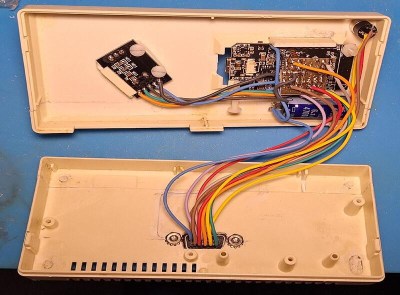This project submitted to the 2025 Pet Hacks Contest brings a bit of IoT to your finned friends. Aquassist is a fish feeder that is primarily 3D printed only requiring a servo and a microcontroller to give you remote control of feeding your fish.
The Aquassist consists of just six 3D-printed parts. At its core is an Archimedes screw, a mechanism that ensures consistent portions of fish food are dispensed into the fish tank. A small hopper on top holds the food, and to minimize the part count, all 3D-printed components are designed to be glued together.
The brains of the operation take place in a Wemos D1 mini, a compact ESP8266 board programed using the Arduino IDE. The feeding mechanism relies on an SG90 continuous rotation servo, which rotates the Archimedes screw to dispense food. Unlike standard servos, this model offers ample torque in a small package and can rotate continuously without hitting an angular limit.
The Aquassist is controlled via a web-based application accessible from any device. The D1 Mini connects to Firebase to check the feeding schedule or detect if the “Feed Now” button has been pressed. Users can set feeding times or trigger an immediate feeding through the app’s intuitive interface. Check out a video below to see the Aquassist in action, and check our our other entries into the 2025 Pet Hacks Contest.
Continue reading “2025 Pet Hacks Contest: Aquassist Fish Feeder”


















